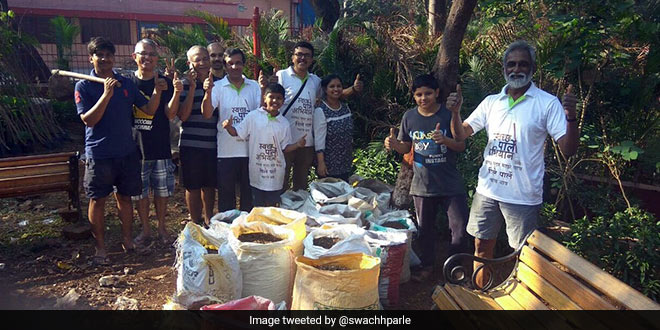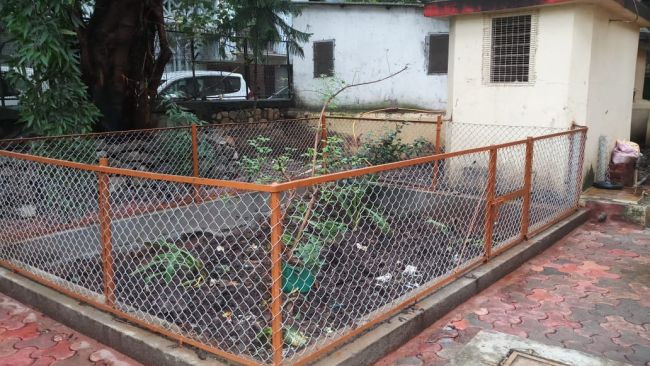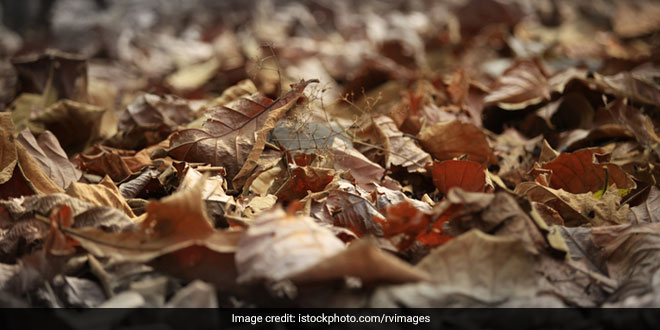New Delhi: Whenever we visit a religious place, the first thing most of us do is, purchase flowers, garlands, coconut, milk and other things for offerings. But have you ever wondered what happens to all the offerings you offer to different deities? According to diverse religious beliefs, offerings are considered as sacred, it is not to be dumped at a landfill, with other kinds of waste. Because of the same belief, offerings to the revered idols are thrown in some or the other river, lake, or pond, thereby polluting water bodies. But, to change the state of temple waste and stop offerings from going to landfills or water bodies, four temples in Mumbai have joined the garbage free campaign by Swachh Parle Abhiyan, citizens’ initiative to achieve ‘zero garbage’ in Vile Parle.
Until 2015, offerings at Shree Parleshwar temple and Mahalakshmi temple in Mumbai used to make its way to a nearby dumping ground. Everyday I used to witness the offerings getting mingled with all other kinds of waste. It was something I could not digest. Also, I and my friends wanted to stop the generation of waste. So, combining the two, we approached the trustees of both the temples and proposed our plan to convert temple waste into compost. Fortunately, they agreed to it and it is then we taught them the process of converting temple waste to compost, recounts Aniket Karandikar, one of the volunteers at Swachh Parle Abhiyan, while speaking to NDTV.
Also Read: How A Waste Management Project Started In Madurai’s Parking Lot Is Producing Organic Vegetables
Converting Temple Waste To Compost
Shree Parleshwar temple and Mahalakshmi temple in Mumbai have installed compost boxes of size 2×4 in their premises. Everyday temple waste goes into the compost box with some amount of culture added to it. To increase the pH value (a measure of acidity) of the compost, waste flour is added, once in a week. Explaining the process in detail, Aniket says,
Culture accelerates the process of composting and therefore it is essential to blend it properly with the waste. For the same, the flower waste is mixed and turned up twice a day. Near temples, there is a flour mill. I get the flour waste from the mill every week and put it in the compost box. The entire process takes 20 days. Once the compost is ready, 10 per cent of it is shifted to second box, reason being, culture in it will aid in the process of composting in second box, and remaining is used.
Also Read: From Garbage To Greenery, Mumbai’s Cooper Hospital Leads The Way In Effective Waste Management
This way, the temples produce 10 bags of compost every month, which is then used in nurturing and planting the trees in the vicinity. Impressed with the success story of Shree Parleshwar temple and Mahalakshmi temple, around eight months ago, Datta mandir and Ram mandir in the market too started composting their waste.
Swachh Parle Abhiyan’s Swachh Journey
Apart from helping temples compost their waste, the team gives lessons and training on how to do composting at home. The team encourages individuals to use household waste and do composting. For the same, the team provides a small basket for composting along with culture. Also, the team urges buildings and residential societies to take composting at their premises.
Not only is this, last year during Ganapati immersion, the team started the process of converting flower waste into manure. Talking about the same, Aniket, says,
Post ganapati immersion at Hedgewar Udyan, with the help of BMC (Brihanmumbai Municipal Corporation) flower waste is taken to Savarkar Udyan. There we treat the flower waste and by the end of the year, we get manure. This year too we plan to do the same.
During Ganpati, the team doubles the produce. For instance, this year in February, the team produced a whopping 750 kgs of compost from about 7 tonnes of flower waste. A total of 14 tonnes of flower offerings waste was collected of which 4 tonnes was plastic and other non-biodegradable waste.
Delighted to share that 750 kgs of #Compost was extracted from abt 7 tonnes of Ganesh Festival Nirmalya harvested recently. 3 Tonnes is still under process. During the Gnesh festival, abt 14 Tonnes of nirmalya was collected, out of which 4 tonnes was non compostable waste. pic.twitter.com/HCeprHqcww
— Swachh Parle Abhiyan (@swachhparle) February 7, 2018
NDTV – Dettol Banega Swachh India campaign lends support to the Government of India’s Swachh Bharat Mission (SBM). Helmed by Campaign Ambassador Amitabh Bachchan, the campaign aims to spread awareness about hygiene and sanitation, the importance of building toilets and making India open defecation free (ODF) by October 2019, a target set by Prime Minister Narendra Modi, when he launched Swachh Bharat Abhiyan in 2014. Over the years, the campaign has widened its scope to cover issues like air pollution, waste management, plastic ban, manual scavenging and menstrual hygiene. The campaign has also focused extensively on marine pollution, clean Ganga Project and rejuvenation of Yamuna, two of India’s major river bodies.



























